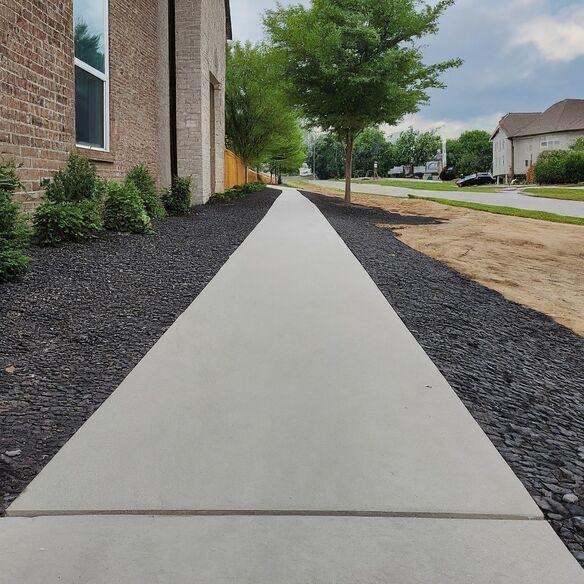Sidewalks are an essential part of our urban infrastructure, providing safe and accessible pathways for pedestrians. Over time, sidewalks can deteriorate due to factors such as heavy traffic, weather conditions, and aging. When sidewalks become damaged or unsafe, replacement becomes necessary. This comprehensive guide will explore the process of sidewalk replacement, from initial assessment to final restoration.
Understanding the Need for Sidewalk Replacement
Sidewalk replacement is often required when:
- Structural damage: The sidewalk has developed significant cracks, potholes, or uneven surfaces that pose a safety hazard.
- Trip hazards: Raised or sunken sections of the sidewalk can cause tripping accidents.
- ADA compliance: The sidewalk does not meet the Americans with Disabilities Act (ADA) accessibility standards.
- Aesthetic concerns: The sidewalk is visually unappealing and detracts from the overall appearance of the area.
Assessing the Sidewalk Condition
Before proceeding with sidewalk replacement, a thorough assessment is necessary to determine the extent of damage and identify the most appropriate repair method. This assessment can be conducted by a qualified professional, such as a civil engineer or contractor. The assessment will typically involve:
- Visual inspection: Examining the sidewalk for cracks, potholes, and other signs of damage.
- Structural testing: Evaluating the sidewalk’s load-bearing capacity and stability.
- ADA compliance check: Ensuring that the sidewalk meets the ADA accessibility standards.
Permitting and Planning
Once the need for sidewalk replacement has been established, it is essential to obtain the necessary permits from local authorities. The permitting process may vary depending on the location, but typically involves submitting plans and specifications for the proposed replacement project.
In addition to permitting, it is also important to plan the project carefully. This includes:
- Traffic management: Developing a plan to manage traffic flow during construction.
- Utility coordination: Identifying and relocating any underground utilities that may interfere with the project.
- Material selection: Choosing suitable materials for the new sidewalk, such as concrete, brick, or natural stone.
Demolition and Excavation
The first step in sidewalk replacement is to remove the existing sidewalk. This involves breaking up the concrete or other material using specialized equipment, such as jackhammers or hydraulic breakers. The excavated material can then be hauled away for disposal.
Grading and Preparation
Once the old sidewalk has been removed, the base for the new sidewalk must be prepared. This involves grading the area to ensure proper drainage and creating a stable foundation. The base may consist of a layer of crushed stone or gravel.
Installation of the New Sidewalk
The installation of the new sidewalk can be done using several methods, depending on the materials chosen and the specific requirements of the project. Common methods include:
- Pour-in-place concrete: This method involves pouring liquid concrete into forms and allowing it to cure.
- Precast concrete: Precast concrete slabs can be installed and joined together to create the sidewalk.
- Brick or natural stone: These materials can be laid individually and mortared together to form the sidewalk.
Finishing Touches
After the new sidewalk has been installed, it may require finishing touches to ensure its durability and appearance. This can include:
- Jointing: Creating expansion joints to accommodate movement due to temperature changes or settling.
- Sealing: Applying a sealant to protect the sidewalk from moisture and stains.
- Accessibility features: Incorporating features such as curb cuts and tactile paving to improve accessibility for pedestrians with disabilities.
Maintenance and Inspection
Proper maintenance is essential to prolong the life of a new sidewalk. Regular inspections should be conducted to identify and address any issues before they become more serious. Maintenance tasks may include:
- Cleaning: Removing debris and leaves from the sidewalk.
- Repairing cracks: Patching small cracks to prevent them from worsening.
- Replacing damaged sections: Replacing any sections of the sidewalk that become severely damaged.
Sidewalk replacement is a complex process that requires careful planning and execution. By following the steps outlined in this guide, property owners and municipalities can ensure that their sidewalks are safe, accessible, and aesthetically pleasing for years to come. otherwise you can also hire the best contractors.

